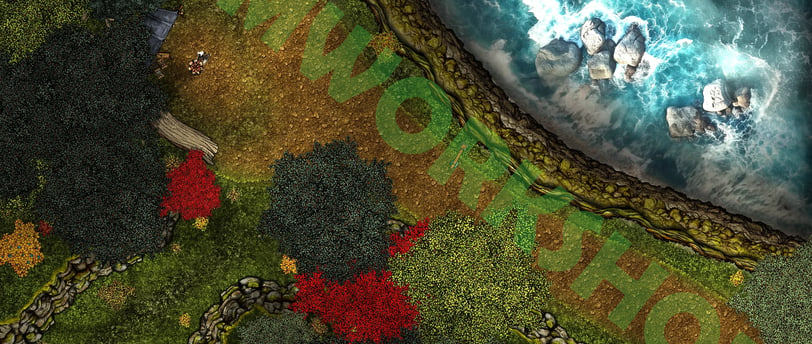Essential Map-Making Tips for D&D and TTRPG Enthusiasts
WORLD BUILDING


🗺️ Essential Map-Making Tips for D&D & TTRPG Enthusiasts
Whether you're crafting a whole world or just the next dungeon crawl, maps are your most powerful storytelling tool. But don’t worry—this isn’t about artistic skill. It’s about clarity, creativity, and smart design.
Here are five essential tips to sharpen your map-making game for tabletop adventures.
🪨 1. Start With Natural Geography
Good maps begin with nature. Use these as your foundation:
Mountains and hills define terrain and movement.
Rivers almost always start from high elevation and flow to oceans or lakes.
Forests, deserts, and swamps create environmental flavor and obstacles.
Why it matters: Realistic geography makes your world feel believable. Even the most magical realms benefit from a dose of logic.
🏛️ 2. Cities Follow Resources and Roads
When placing settlements, ask:
Is it near fresh water?
Does it have access to food or trade routes?
Would someone want to conquer or defend it?
Villages pop up near farms, mines, or crossroads. Cities form at strategic trade hubs, coastlines, or ancient ruins. Always ask: Why did people build here?
🏰 3. Use Symbolic Scale
Not every map needs to be to scale. Use symbolic elements—a castle icon for a stronghold, a skull for danger, a tree for a cursed grove.
Players don’t need GPS precision. They need clear visuals that inspire and guide them.
Bonus tip: Label key areas with intriguing names. “Ashmoor” or “The Hollow Throne” sparks more curiosity than “Western Plains.”
📏 4. Think in Layers
Different map types serve different goals:
World maps give players a big picture (good for politics, travel, and factions).
Regional maps show paths, borders, and terrain details.
Local maps—towns, dungeons, lairs—are for direct interaction and encounters.
You don’t have to build all layers at once. Start big, then zoom in as needed.
🕵️ 5. Embrace Mystery
Blank spaces aren’t a flaw—they’re opportunity.
Players love exploring the unknown. Leave parts of the map vague or unexplored. Rumors, old maps, and NPC knowledge can fill in gaps as the game unfolds.
Pro Trick: Give players an incomplete map. Let them draw in new discoveries. Now your map becomes part of the storytelling experience.
🎯 Final Thought
A great map isn’t about how it looks—it’s about how it inspires.
So sketch boldly, think logically, and let the map evolve as your party does. Your world is waiting to be discovered—one hex, hallway, or forgotten isle at a time.